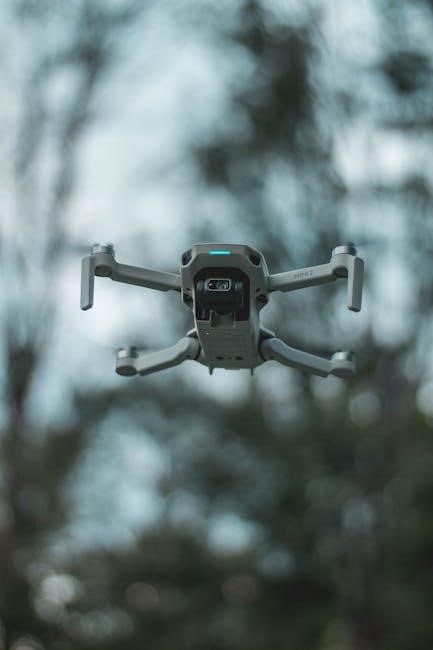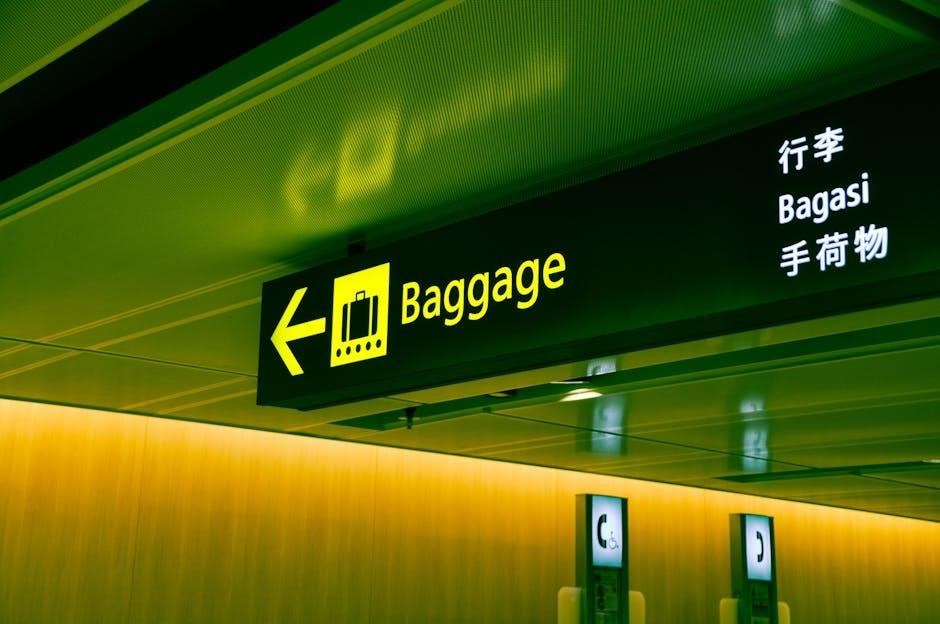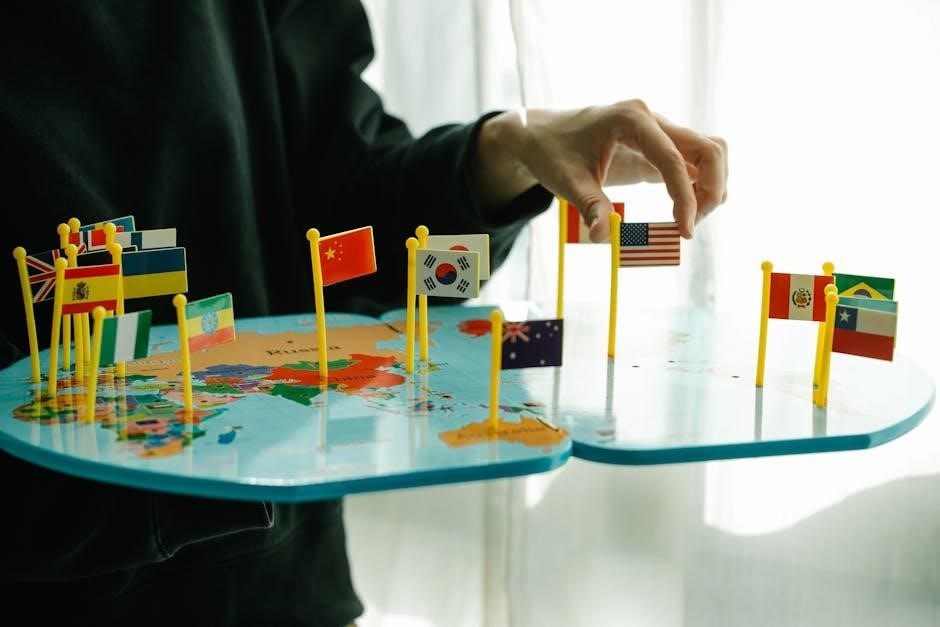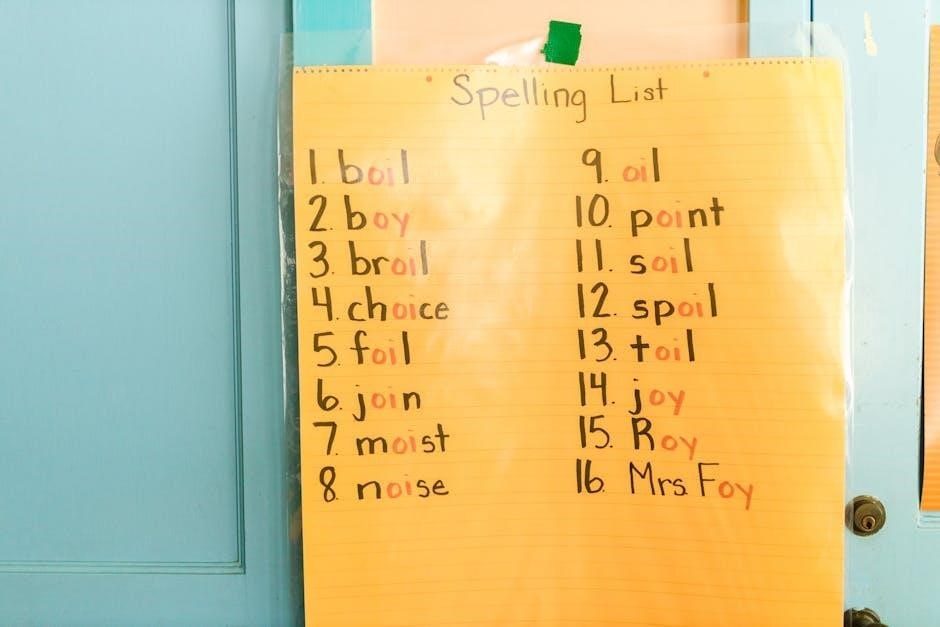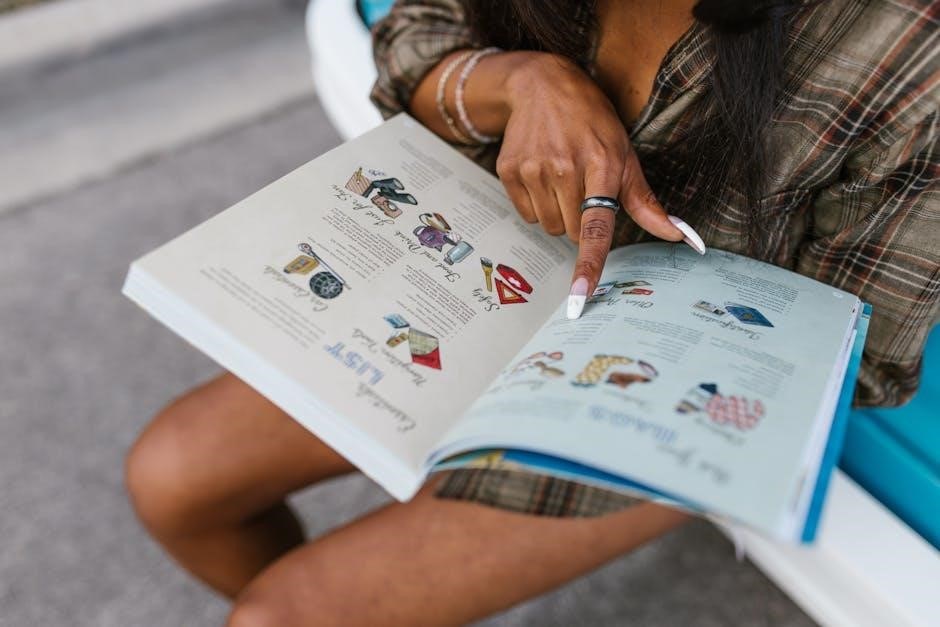Alan Spaulding is a central figure in Guiding Light, portrayed as a wealthy, cunning, and powerful businessman. His complex schemes and intricate family dynamics shaped the show’s dynamics.
1.1 Overview of the Character
Alan Spaulding is a central character in Guiding Light, embodying wealth, power, and cunning. As the CEO of Spaulding Enterprises, he wields significant influence, often using manipulative tactics to achieve his goals. His complex personality, marked by a mix of charm and ruthlessness, makes him a compelling figure. Alan’s schemes, including faked deaths, showcase his dramatic flair and ability to control those around him. His intricate family dynamics, particularly with his son Alan-Michael, add depth to his character. Introduced in 1977, Alan became a pivotal figure in Springfield’s power struggles, shaping the show’s narrative through his business strategies and personal relationships. His legacy as a master manipulator and family patriarch endures, making him one of Guiding Light’s most memorable characters.
1.2 Importance in Guiding Light
Alan Spaulding’s significance in Guiding Light lies in his role as a mastermind who drove the show’s dynamics through his schemes and family conflicts. As CEO of Spaulding Enterprises, he wielded immense power, influencing Springfield’s business and social landscapes. His manipulative tactics and faked deaths kept audiences engaged, while his complex relationships, particularly with his son Alan-Michael, added emotional depth. Alan’s character represented both villainy and vulnerability, making him a pivotal figure. His presence shaped key storylines, and his legacy endured long after his on-screen departure. Through his cunning and charisma, Alan Spaulding became an iconic figure, embodying the drama and intrigue that defined Guiding Light.
Alan Spaulding was introduced in 1977 by writers Bridget and Jerome Dobson, first portrayed by Christopher Bernau, marking a pivotal shift in Springfield’s power dynamics.
2.1 The Concept and Creation
Alan Spaulding was introduced in 1977 by writers Bridget and Jerome Dobson, debuting on Guiding Light as a wealthy, cunning businessman. His creation aimed to bring complexity and power dynamics to Springfield. Portrayed initially by Christopher Bernau, Alan was designed to embody both charm and ruthlessness, making him a compelling antagonist. His character was crafted to explore themes of family, ambition, and manipulation, adding depth to the show’s narrative. The writers intended for Alan to be a central figure, driving storylines through his corporate schemes and personal conflicts. His introduction marked a significant shift in the show’s focus, establishing him as a pivotal character in Springfield’s history.
2.2 Debut on Guiding Light
Alan Spaulding debuted on Guiding Light on November 23, 1977, portrayed by Christopher Bernau. His arrival marked a significant shift in Springfield’s power dynamics, introducing a wealthy, cunning businessman. The character’s debut was crafted to shake the town’s social and business structures, positioning Alan as a central figure. His first appearance set the tone for his manipulative and ambitious nature, immediately drawing viewers into his complex world. The debut episode highlighted his ruthless strategies and family conflicts, establishing him as a pivotal character. Alan’s introduction was a turning point for the show, blending drama, power struggles, and personal intrigue, making him an unforgettable presence in Springfield’s history.
Actor History
Alan Spaulding was portrayed by Christopher Bernau (1977-1984, 1986-1988), Daniel Pilon (1988-1989, 1990), and Ron Raines (1994-2009), each bringing depth to the character’s complex persona.
3.1 Christopher Bernau (1977-1984, 1986-1988)
Christopher Bernau originated the role of Alan Spaulding from 1977 to 1984 and reprised it from 1986 to 1988. His portrayal defined the character’s complexity, blending cunning and charm. Bernau’s performance highlighted Alan’s manipulative nature and his struggle for power within the Spaulding family. His departure in 1988 was due to health issues, and he passed away in 1989. Bernau’s portrayal remains iconic, establishing Alan as a central figure in Guiding Light’s dynamics.
3.2 Daniel Pilon (1988-1989, 1990)
Daniel Pilon took over the role of Alan Spaulding from 1988 to 1989 and briefly in 1990. His portrayal maintained the character’s essence of power and manipulation. Pilon’s performance was notable for its intensity, bringing depth to Alan’s schemes and family conflicts. His tenure was shorter than Bernau’s but impactful, contributing to the show’s ongoing storylines. Pilon’s interpretation of Alan Spaulding kept the character relevant during a transitional period in Guiding Light’s history.
3.3 Ron Raines (1994-2009)
Ron Raines portrayed Alan Spaulding from 1994 to 2009, bringing a fresh interpretation to the character. Known for his versatility, Raines also excelled in musical theatre and concerts. His portrayal emphasized Alan’s complexity, wealth, and power, while maintaining the character’s cunning nature. Raines’ performance seamlessly integrated into the show’s dynamics, particularly in scenes involving family conflicts and corporate schemes. His long tenure solidified Alan Spaulding’s legacy as a central figure in Guiding Light. Raines’ ability to balance drama with nuance made his version of Alan memorable, leaving a lasting impact on the show’s history.
Character Personality and Traits
Alan Spaulding is a multifaceted character, known for his wealth, cunning, and manipulative nature. His complex personality drives the show’s drama through power struggles and family dynamics.
4.1 Wealth and Power
Alan Spaulding’s immense wealth and power are central to his character. As CEO of Spaulding Enterprises, he wields significant influence over Springfield’s business and social landscapes. His financial prowess allows him to manipulate situations to his advantage, often using his resources to further his personal and professional agendas. Alan’s wealth is not just a tool for success but also a symbol of his status, making him a formidable figure in both his family and the community. His ability to control and dominate through his wealth underscores his role as a pivotal character in Guiding Light.
4.2 Cunning and Manipulation
Alan Spaulding’s cunning and manipulative nature are hallmark traits that define his character. He masterfully uses his intelligence and charm to outwit adversaries, often staying one step ahead in both personal and professional realms. Alan’s ability to manipulate situations and people ensures his dominance, whether through corporate schemes or family dynamics. His ruthlessness in achieving his goals showcases his willingness to bend rules and exploit weaknesses. This trait not only solidifies his power but also creates intricate plotlines, making him a compelling and complex figure in Guiding Light. His manipulative tactics often lead to dramatic twists, keeping audiences engaged and invested in his storyline.
4.3 Family Dynamics
Alan Spaulding’s family dynamics are marked by complexity and tension, particularly with his son Alan-Michael. Their relationship is fraught with power struggles and emotional conflict, often driven by Alan’s controlling nature. His multiple marriages and extended family connections further complicate his personal life, creating a web of alliances and rivalries. Alan’s role as a patriarch is central to his character, as he frequently clashes with relatives while trying to maintain control over both his family and business empire. These dynamics often spill into his professional life, influencing his decisions as CEO of Spaulding Enterprises. The intricate family relationships add depth to his character, making him a pivotal figure in the show’s narrative.
Role as CEO of Spaulding Enterprises
Alan Spaulding, as CEO of Spaulding Enterprises, wielded immense power and influence, using cunning strategies to maintain control and expand the company’s interests, often through manipulative tactics.
5.1 Business Strategies
Alan Spaulding’s business strategies as CEO of Spaulding Enterprises were marked by ruthless ambition and cunning. He employed manipulative tactics to eliminate competitors and expand the company’s influence. His decisions often prioritized power over ethics, leveraging corporate takeovers and strategic alliances to solidify Spaulding Enterprises’ dominance. Alan’s leadership was both innovative and calculating, ensuring the company’s growth through a mix of brilliance and underhanded dealings. His ability to anticipate market trends and exploit opportunities made him a formidable figure in Springfield’s business landscape. These strategies not only defined his role as CEO but also drove the dramatic twists in the show, showcasing his mastery of corporate warfare and relentless pursuit of success.
5.2 Corporate Schemes
Alan Spaulding’s corporate schemes were legendary for their ruthlessness and complexity. As CEO of Spaulding Enterprises, he masterminded hostile takeovers, sabotaged competitors, and orchestrated deals that often blurred ethical boundaries. His schemes frequently involved manipulating others to achieve his goals, whether through coercion, bribery, or strategic deception. One of his most notable tactics was exploiting legal loopholes to gain control of rival companies, solidifying Spaulding Enterprises’ dominance; These actions often led to dramatic power struggles, both within the company and in his personal life. Alan’s corporate schemes not only drove the show’s plot but also showcased his brilliance as a master manipulator, leaving a lasting impact on Springfield’s business and social dynamics.
Family Relationships
Alan Spaulding’s family life was marked by complexity and drama. As a father to Alan-Michael, he struggled with balancing love and control, often leading to conflict and estrangement.
6.1 Marriage and Children
Alan Spaulding’s personal life was as complex as his professional endeavors. He was married to Hope Bauer, with whom he had a son, Alan-Michael Spaulding. Their relationship was fraught with tension, often due to Alan’s controlling nature and extramarital affairs. Despite his flaws, Alan deeply loved his family, though his inability to balance ambition with parenthood strained his connections. Alan-Michael’s upbringing was particularly challenging, with Alan’s constant interference in his life leading to recurring conflict. Additionally, Alan had other children, including Phillip Spaulding, who was adopted, and Gus Aitoro, further complicating the family dynamics. His marriages and children played pivotal roles in shaping his character and the show’s narrative, highlighting his struggles with intimacy and responsibility.
6.2 Alan-Michael Spaulding
Alan-Michael Spaulding, the son of Alan Spaulding and Hope Bauer, was a central character in Guiding Light. His complex and often tumultuous relationship with his father dominated his storyline. Alan-Michael struggled with his father’s controlling nature and the weight of the Spaulding legacy. He was portrayed by several actors, including Rick Hearst, Carl T. Evans, and Michael Dietz. His personal life was marked by multiple marriages and relationships, including with Harley Cooper and Christina Blake Thorpe. Alan-Michael’s journey often revolved around his quest for identity and independence from his father’s influence. His character added depth to the show, exploring themes of family dysfunction and the challenges of living up to expectations. His storyline remains a significant part of Guiding Light’s history.
6.3 Extended Family Connections
Alan Spaulding’s extended family played a significant role in Guiding Light, adding layers to his complex character. His siblings, including Alexandra, Victoria, and Amanda Spaulding, were integral to the family dynamics. Alan’s nieces and nephews, such as Elizabeth Lizzie Spaulding, Alan Cooper, and Zach Spaulding, often found themselves entangled in his schemes. His paternal grandfather, Brandon Spaulding, and grandmother, Penelope Spaulding, shaped the family’s legacy. Alan’s great-grandparents, Samuel and Victoria Spaulding, further rooted the family’s history. These connections highlighted Alan’s role as a patriarch and his struggles with family loyalty, power, and identity, making the Spaulding clan a cornerstone of the show’s narrative.
Major Plotlines and Schemes
Alan Spaulding was known for his cunning schemes, including faked deaths and manipulations, which drove the drama in Guiding Light and shaped Springfield’s power dynamics.
7.1 Faked Deaths
Alan Spaulding’s faked deaths were pivotal plot points in Guiding Light, showcasing his cunning nature. His first faked death occurred in June 1984, shocking Springfield and his family. This scheme allowed him to manipulate circumstances to his advantage, maintaining control over Spaulding Enterprises. Another faked death happened in January 2006, further solidifying his reputation as a master manipulator. These plotlines highlighted his ability to deceive even those closest to him, including his son Alan-Michael. The faked deaths not only advanced the storyline but also underscored Alan’s ruthless determination to protect his power and legacy. His returns from the “dead” were always dramatic, reigniting conflicts and keeping viewers engaged in his intricate schemes.
7.2 Manipulations and Deceptions
Alan Spaulding’s manipulations and deceptions were hallmark traits, defining his character in Guiding Light. As CEO of Spaulding Enterprises, he masterfully orchestrated corporate takeovers and schemes to maintain power. His cunning extended to personal relationships, often manipulating family members like his son Alan-Michael to achieve his goals. Alan’s ability to deceive was unparalleled, as he frequently outmaneuvered rivals and even faked his own death to protect his interests. His manipulative tactics were both ruthless and calculated, ensuring his legacy endured. These actions not only drove the show’s drama but also solidified his reputation as a formidable and complex character. His schemes kept viewers captivated, making him a central figure in Springfield’s dynamics;
Legacy and Impact
Alan Spaulding’s legacy as a powerful, complex character left an indelible mark on Guiding Light. His schemes and family dynamics shaped Springfield’s storylines, making him unforgettable.
8.1 Influence on Guiding Light
Alan Spaulding’s influence on Guiding Light was profound, shaping the show’s dynamics through his role as CEO of Spaulding Enterprises. His cunning nature and complex schemes drove storylines, captivating audiences. Portrayed by Christopher Bernau, Daniel Pilon, and Ron Raines, his character’s depth and power elevated the series. Alan’s manipulations and family conflicts became central plot points, defining Springfield’s drama. His legacy as a mastermind left a lasting impact, making him one of the show’s most memorable characters. His influence endured even after his eventual departure, solidifying his place in soap opera history.
8.2 Memorable Moments
Alan Spaulding’s most memorable moments on Guiding Light include his dramatic faked deaths, which stunned audiences and reshaped storylines. His manipulative schemes, often targeting family and rivals, showcased his cunning nature. A pivotal moment was his 1986 return from the dead, reigniting power struggles in Springfield. His complex relationship with son Alan-Michael, marked by control and conflict, was a focal point. Additionally, his emotional goodbye to Phillip in 1984 and his rivalry with Reva Shayne highlighted his multifaceted character. These moments cemented Alan as a mastermind, leaving an indelible mark on the show’s history.
Alan Spaulding remains a cornerstone of Guiding Light, embodying power, complexity, and drama. His legacy as a cunning businessman and manipulative patriarch left an enduring impact on Springfield’s dynamics. Through his faked deaths, intricate schemes, and tangled family relationships, Alan became a defining character. Portrayed by actors like Christopher Bernau, Daniel Pilon, and Ron Raines, his evolution captivated audiences for decades. His influence extended beyond business, shaping personal and professional lives alike; Alan Spaulding’s memorable moments and lasting impact ensure his place as one of soap opera’s most iconic figures, forever etched in Guiding Light’s history.






